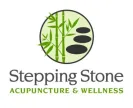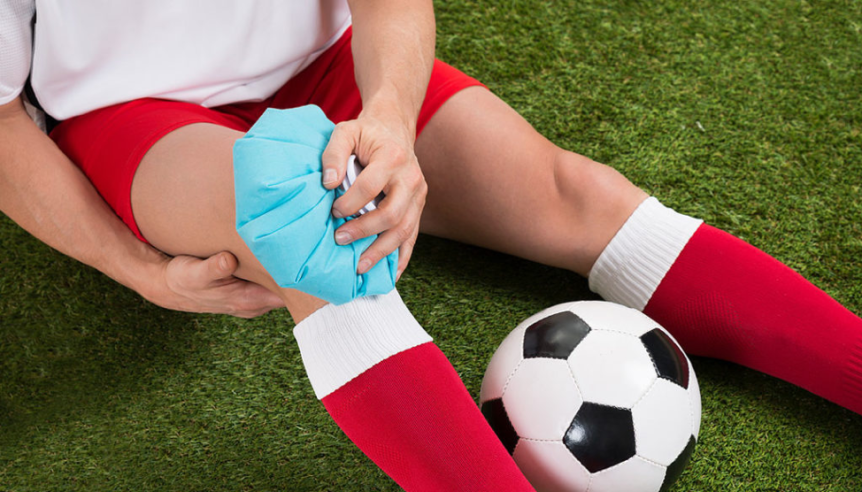By Marcie Bower, Lic.Ac.
This post is copied from our older, original blog. Original post date 5/5/2017.
Acupuncture has become more and more mainstream in recent years, and has made the news when professional athletes talk about how much it has helped them: Kobe Bryant. Grant Hill. AJ Barnett. Aaron Rodgers. Last summer, cupping, a Chinese Medicine modality practiced by acupuncturists, made news when Olympic swimmer Michael Phelps appeared on race day with his cupping marks.
But acupuncture and Chinese Medicine therapies are not just for elite athletes. They are used by weekend warriors, marathoners, high school and college athletes, kids hurt on the soccer or football field, and those parents just getting back into a work-out routine.
Why? First and foremost, regular acupuncture can prevent injuries from occurring.
Preliminary research has also shown that acupuncture may have a positive impact on factors that impact athletic performance, such as power, blood pressure, and the body’s ability to recover post-exercise.[i]
Acupuncture is also a well-known treatment for many common sports injuries, often eliminating the need for more invasive treatments such as surgery or steroid injections. Acupuncture can reduce the need for pain medication, which is appealing to many athletes, and can also quicken recovery time after an injury. Here are some of the common sports injuries we treat in our practice:
Lower Body Injuries:
- “Runner’s Knee” – Patellofemoral Pain Syndrome, often dubbed “Runner’s Knee”, is an irritation of the cartilage underneath the kneecap. Symptoms of Runner’s Knee include localized pain and stiffness following long runs, going up or down stairs, and after sitting for long periods of time. Acupuncture may be an effective treatment for Runner’s Knee. A 2007 Randomized Controlled Trial of 75 patients with PFPS found that acupuncture twice per week for 4 weeks significantly reduced pain levels compared to no treatment.[ii]
- Hamstring Issues: The hamstrings are the muscle group that run along the back of the upper leg. In many sports that require running, these muscles are frequently overpowered by the quads in the front of the leg, which sets up the athlete for injury. Hamstrings in athletes are often too stretched or too weak, making them easily susceptible to a pull or a tear. Acupuncture can help heal hamstring strains by guiding excess fluid out of the area, increasing blood flow through a damaged area, aiding in tissue healing, and reducing pain and tension.
- Plantar Fasciitis: Plantar Fasciitis is actually how I got into acupuncture – I used acupuncture throughout my time as a college cross-country and track runner to manage plantar fasciitis pain. Plantar fasciitis refers to an inflammation of the dense connective tissue that runs along the bottom of the foot, which causes heel and arch pain. A 2012 Systematic Review of 5 RCTs and 3 non-randomized comparison studies found that there is evidence to support the effectiveness of acupuncture for treating Plantar Heel pain.[iii]Moreover, they found the level of evidence in support of acupuncture is comparable to the evidence supporting currently standard-of-care therapies such as stretching, night splints, and medication.
- Shin Splints: Shin splints refer to microtears in the muscles along your shin bone, or Tibia. It often presents as sharp pain in the shin. In clinical practice, we see acupuncture reduce the pain associated with shin splints, especially when combined with topical Chinese Herbal Medicine or moxibustion treatment, which is a kind of heat therapy that involves burning the herb mugwort, or Moxa.
- IT Band Syndrome: The IT Band is a band of dense connective tissue on the outside of the upper leg, and it can become irritated and inflamed from rubbing against the femur. Issues also arise when the IT Band is too tight. The IT Band runs from the hip to the knee, so can present as hip pain or soreness, lateral (outside) knee pain, or tension and pain along the outer thigh. This is a very common injury for which acupuncture can be very helpful. We often treat IT Band issues using electro-acupuncture, which helps to loosen the tissue, increase mobility, and reduce pain.
Upper Body Injuries:
- “Tennis Elbow” and “Golfer’s Elbow” – Lateral epicondylitis or medial epicondylitis refer to damage, inflammation, or swelling to muscles of the forearm, leading to pain at the tendon attachments at the elbow. Acupuncture and associated therapies can reduce inflammation and pain, and reduce muscle tension in the forearm. A2014 systematic review of published studies concluded that acupuncture was more effective than placebo treatments for tennis elbow, and 10 studies showed “that acupuncture or moxibustion was superior or equal to conventional treatment, such as local anesthetic injection, local steroid injection, non-steroidal anti- inflammatory drugs, or ultrasound.”[iv]
- Rotator Cuff Tears: The muscles of the rotator cuff help to stabilize and move the shoulder joint. They are frequently injured in sports with lots of arm involvement, such as baseball, lacrosse, tennis, and volleyball. A full tear in a rotator cuff muscle or tendon requires surgery to fix. However, partial or microtears, which can cause substantial swelling, inflammation, and pain, can often be fixed with acupuncture and Chinese Medicine therapies.
Back and Head Injuries:
- Low Back Pain: Low Back Pain is an incredibly common sports injury. Muscle spasms in the low back can result from improper lifting, abdominal work that is too intense, and overly tight hamstrings. Low Back Pain can also be a result of a herniated, bulging, or irritated lumbar disc. Acupuncture can be a very effective source of pain relief for many types of low back pain, including back spasms and disc issues. One of the largest acupuncture studies ever conducted, on 1162 participants with chronic low back pain in Germany, showed that acupuncture was almost twice as effective as conventional care in managing low back pain.[v]
- Concussions: Acupuncture can be an effective part of a multi-modality approach to concussions and mild traumatic brain injury. With regular treatments, we see a decrease in concussion symptoms such as headaches, blurry vision, poor memory, inability to concentrate. A 2013 systematic review concluded that acupuncture improves mild TBI symptoms when added to conventional care methods.[vi]
At Stepping Stone Acupuncture & Wellness in Wellesley, my fellow acupuncturists and I treat patients of all ages with acupuncture and Chinese Medicine therapies for a wide array of acute and chronic health issues, including sports injuries. Our acupuncturists are experienced working with athletes of all levels, both to prevent injuries from occurring and to treat these common sports injuries listed above (and other not-so-common ones!) Our goal is to get you back to the sport you love, fully recovered and pain-free, as quickly as possible.
For more information, visit www.steppingstoneacu.comor call us at 781-898-4083.
[i]Urroz, Paola, et al. “Effect of acute acupuncture treatment on exercise performance and postexercise recovery: a systematic review.” The Journal of Alternative and Complementary Medicine 19.1 (2013): 9-16.
[ii]Roar Jensen, Øystein Gøthesen, Knut Liseth, and Anders Baerheim. “Acupuncture treatment of patellofemoral pain syndrome.” The Journal of Alternative and Complementary Medicine. September 2007, 5(6): 521-527.
[iii]Clark, Richard James, and Maria Tighe. “The effectiveness of acupuncture for plantar heel pain: a systematic review.” Acupuncture in Medicine 30.4 (2012): 298-306.
[iv]Gadau, Marcus, et al. “Acupuncture and moxibustion for lateral elbow pain: a systematic review of randomized controlled trials.” BMC complementary and alternative medicine 14.1 (2014): 136.
[v]Haake, Michael, et al. “German Acupuncture Trials (GERAC) for chronic low back pain: randomized, multicenter, blinded, parallel-group trial with 3 groups.” Archives of internal medicine 167.17 (2007): 1892-1898.
[vi]Wong, Virginia, et al. “Acupuncture for acute management and rehabilitation of traumatic brain injury.” The Cochrane Library (2013).


